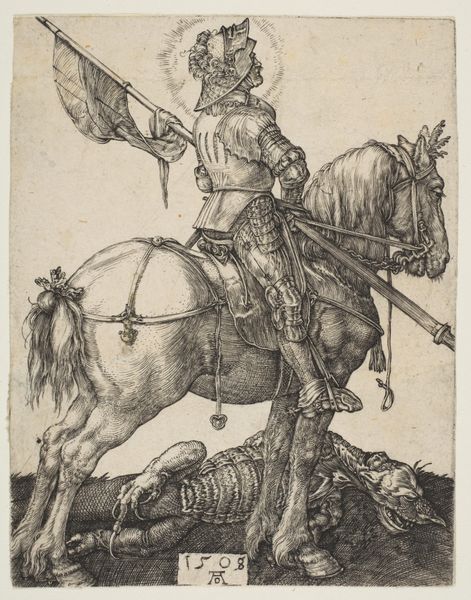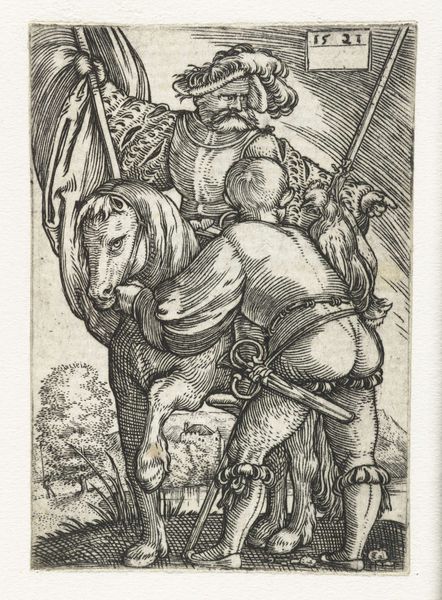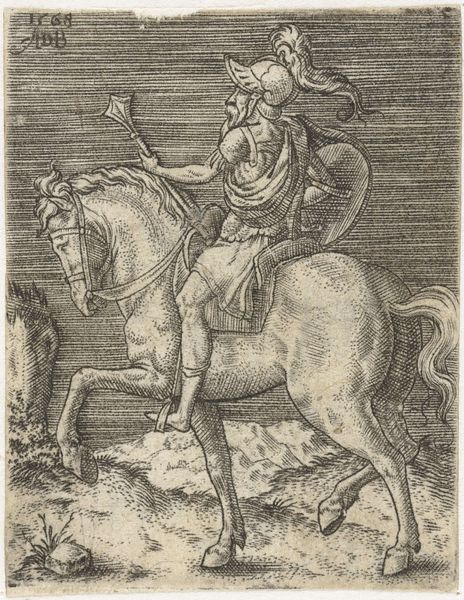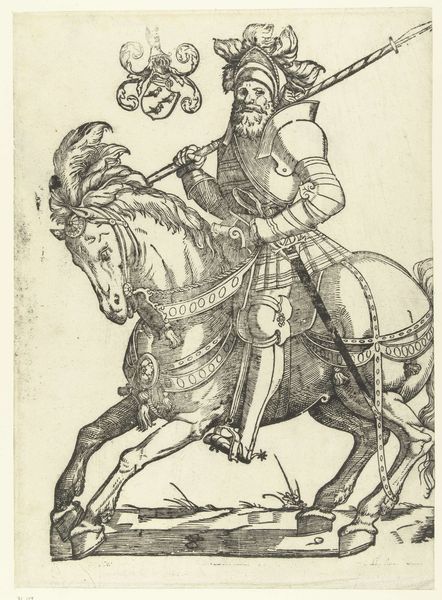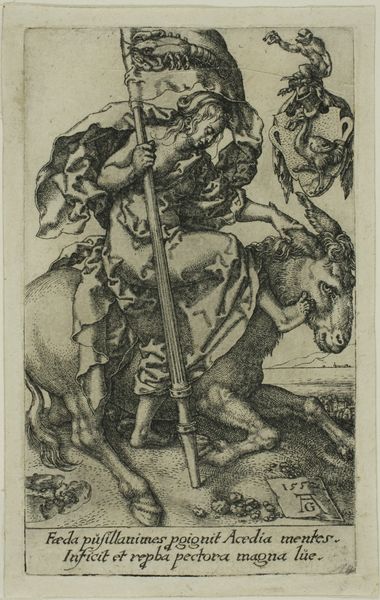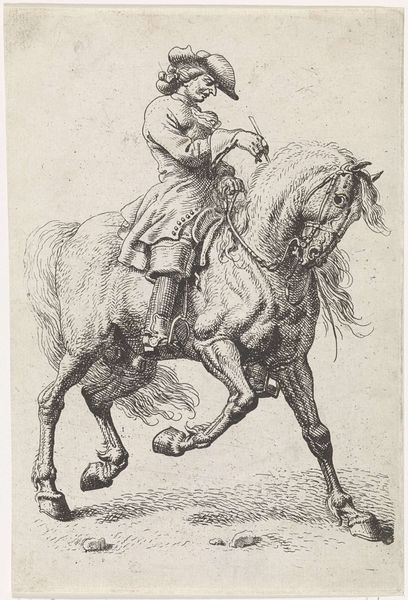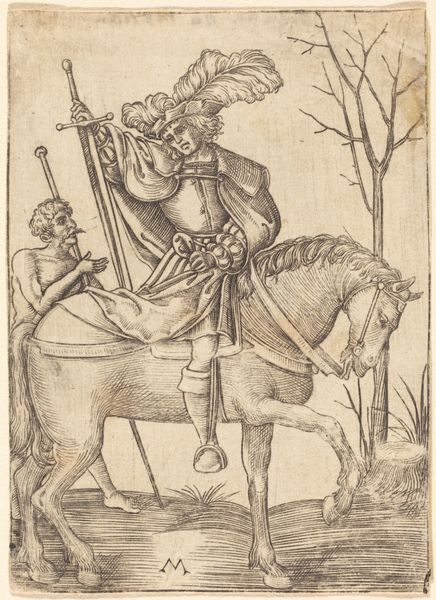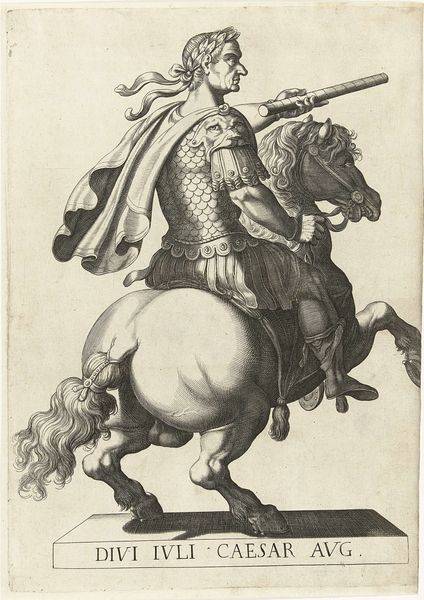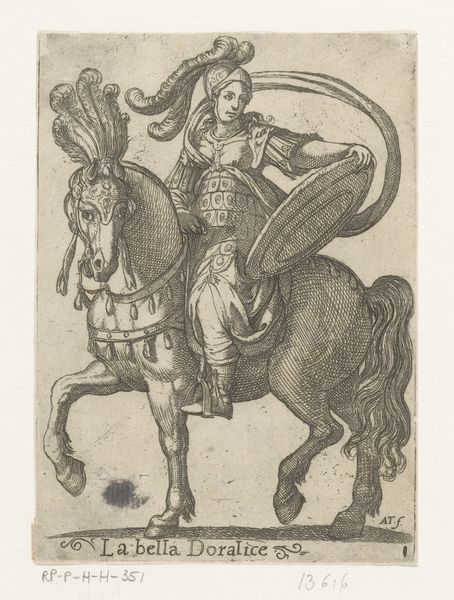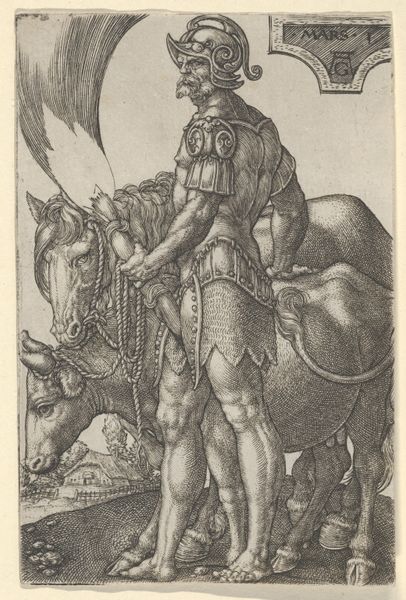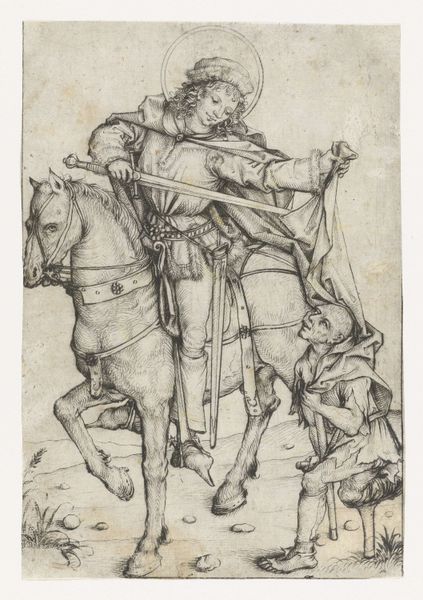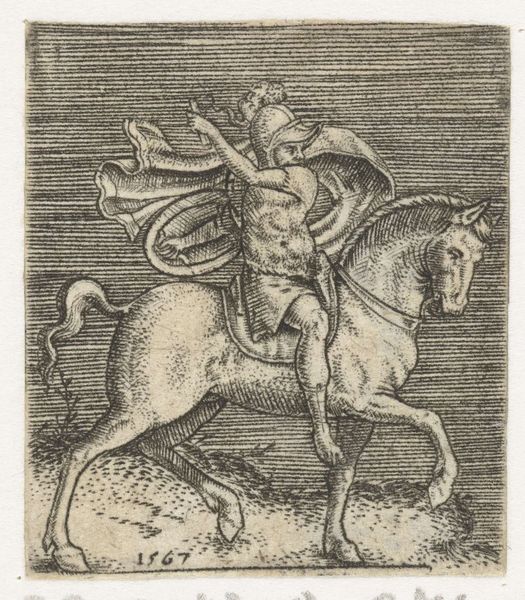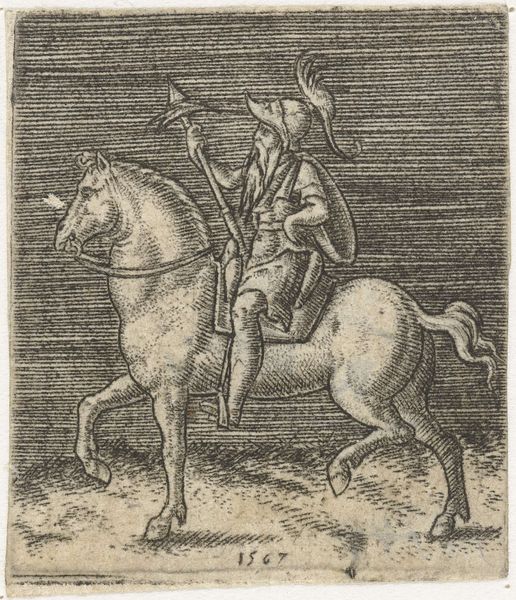
print, engraving
# print
#
figuration
#
genre-painting
#
history-painting
#
northern-renaissance
#
engraving
Dimensions: height 61 mm, width 43 mm
Copyright: Rijks Museum: Open Domain
Editor: Here we have "Ruiter en voetknecht," or "Horseman and Foot Servant," an engraving made between 1520 and 1562 by Monogrammist AC. It strikes me how vulnerable the servant appears compared to the armored rider. How might we read the power dynamics at play through its materiality? Curator: The very process of engraving—etching into a metal plate to produce reproducible images—speaks to power. Who could afford prints, and what did these images communicate about social hierarchy? Notice the contrast: the labor-intensive production mirrors the social divide it depicts, and brings to mind the print's consumption, accessible to some, forbidden to others. Editor: That makes me consider the detail in the rider's armor, versus the bare skin of the servant. What did the material of armor mean during this period? Curator: Armor signified wealth and martial power, not just protection. Think about the iron mines, the skilled labor of the armorer, the economic investment – all literally embodied by the rider. How does the act of displaying these fine clothes in turn reinforce societal notions of wealth? Editor: So, the artist is using the material itself to comment on social inequalities of the time? Curator: Precisely. It’s a pointed observation on how access to resources, like finely crafted objects or the power of a horse, define status. Editor: So by choosing engraving, Monogrammist AC could disseminate commentary on materiality and its social implications, even if consumed mostly by the wealthy. It highlights the means of production informing both the image and society depicted within. Curator: Absolutely. The print isn’t just a picture; it's a product of a specific labor process commenting on labor and access within its world. I think examining the cultural currency here certainly sheds light on some of our present-day struggles too.
Comments
No comments
Be the first to comment and join the conversation on the ultimate creative platform.
